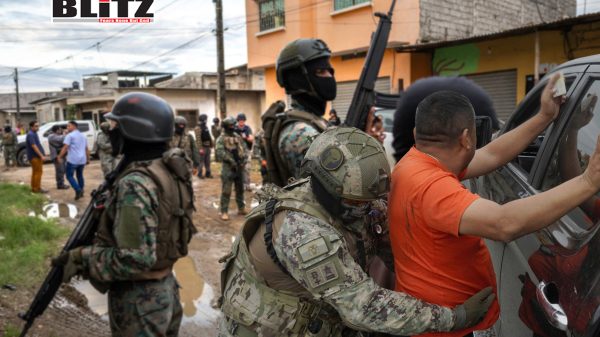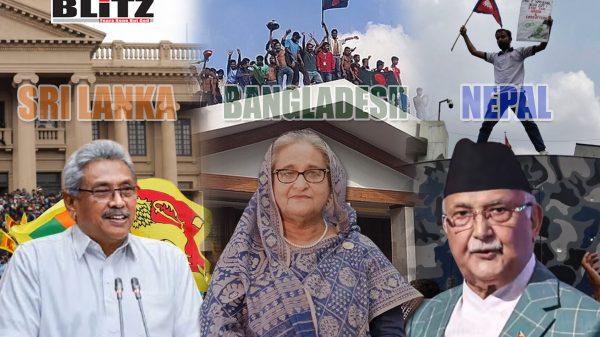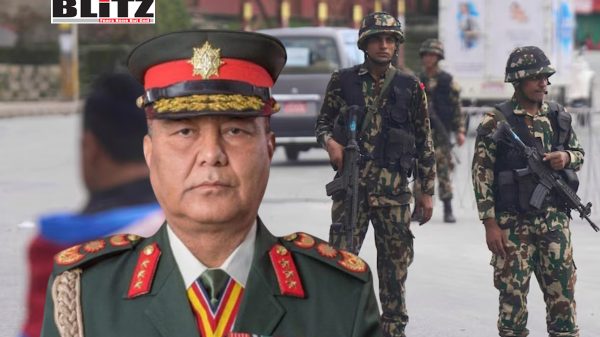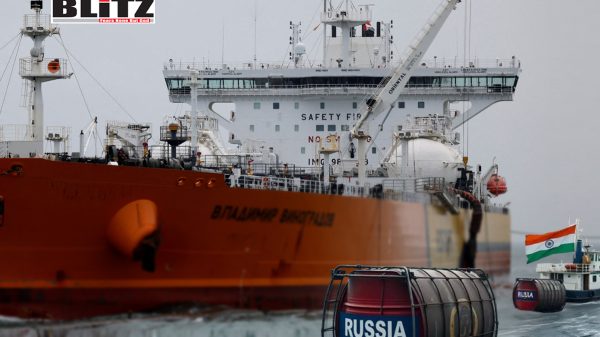Cartel violence transforms Ecuador’s Posorja port from promise of trade to cocaine gateway
- Update Time : Saturday, September 13, 2025

When the Ecuadorian government inaugurated the port of Posorja in 2019, optimism filled the air. Politicians hailed the $1.2 billion deep-water facility, operated by DP World, as a leap into modernity. For decades, Ecuador’s maritime infrastructure had lagged behind regional competitors. Posorja’s port – fitted with scanners, biometric controls, and state-of-the-art container handling systems – was meant to change that.
The town of Posorja, with its sun-beaten streets and modest cinder block homes, was suddenly thrust into the global spotlight. Fishing boats that once brought in tuna and shrimp now docked alongside towering container vessels. Local families imagined stable jobs, improved infrastructure, and a future no longer dependent on precarious fishing yields.
But prosperity came with an uninvited partner: cocaine. Within months of the port’s opening, traffickers had found ways to exploit it. Six years later, Posorja stands as one of the most important gateways for South America’s booming cocaine trade, linking remote drug-producing regions with European demand. The result has been devastating for residents, who find themselves trapped between global criminal networks and a state struggling to maintain control.
The roots of the Posorja port project date back to 2016, when Ecuador granted DP World a 50-year concession. The Dubai-based logistics giant partnered with Nobis Holding, a powerful Ecuadorian business conglomerate led by Isabel Noboa – aunt of the country’s current president, Daniel Noboa. The port was touted as one of Ecuador’s largest-ever foreign investments, a symbol of the country’s ambition to attract capital and diversify its economy.
From a commercial standpoint, the project worked. In less than five years, Posorja overtook Guayaquil in trade volume. Shipping powerhouse Maersk relocated its Ecuador hub there, citing modern facilities and efficiency. International traders funneled bananas, flowers, and other goods through its docks.
But as legal cargo multiplied, so too did illicit cargo. The very traits that attracted legitimate business – efficient infrastructure, global connectivity, and deep-water capacity – also attracted drug traffickers.
Ecuador produces no cocaine of its own. But it sits between Colombia and Peru, the world’s largest producers, and boasts an extensive export network for perishable goods like bananas – the perfect cover for contraband. Cocaine routed through Ecuador can leave in containers within hours of arrival, reducing the risk of detection.
For decades, Guayaquil had been the main exit point. But as authorities ramped up scrutiny, traffickers shifted focus. Posorja, with its cutting-edge port and fewer customs officers relative to cargo volume, emerged as an attractive alternative.
By 2024, the transformation was undeniable. Rotterdam officials identified Posorja as the number one Latin American loading port for cocaine seized that year. Antwerp reported similar findings, while German customs noted a sharp rise in seizures linked to Posorja. Rotterdam alone confiscated over six tons of cocaine tied to Posorja in 2024 – nearly double the amount from Panama, its next closest rival.
Where cocaine flows, violence follows. Homicides in Posorja exploded after the port’s opening. Between 2015 and 2019, just 13 murders were recorded. Since 2020, more than 200 have taken place, many of them targeted executions in broad daylight.
Local residents describe a community gripped by fear. “We used to live peacefully,” said one woman, who declined to give her name. “Now, two or three people are killed every week. Shops close early. Children don’t play outside.”
The perpetrators are Ecuador’s most powerful gangs: Los Choneros and Los Lobos. Once allies, they now wage a brutal turf war for control of drug shipments. Their methods range from extortion to forced displacement. Families have been ordered to vacate homes so traffickers can use them as stash houses. Fishermen are threatened into cooperation. Truck drivers delivering bananas or shrimp face armed hijackings and demands to transport contaminated cargo.
In one chilling case, a driver transporting bananas to Rotterdam testified that cartel gunmen intercepted his truck, forced him to carry cocaine, and threatened to kill his family if he refused. He was later convicted of trafficking when the drugs were found – a stark illustration of how ordinary workers become collateral damage.
DP World insists Posorja is the most secure port in Ecuador. The company cites its cameras, scanners, and canine units. Dogs, in particular, have proven crucial, detecting cocaine hidden in increasingly creative ways – liquefied in textiles, dissolved in liquids, or concealed within container walls.
Yet technology alone cannot solve the problem. A 2024 European security assessment concluded that Posorja’s personnel remain its greatest vulnerability, citing a “high risk” of infiltration and corruption. Even with biennial financial checks and controlled transport of employees, the pressures are immense.
In a town where nearly half the population depends on port-related work, traffickers find ample opportunities to bribe, coerce, or threaten staff. A policeman who led Posorja’s force until last year said gangs even attempted to use residents’ homes as warehouses. When police resisted, they faced violent reprisals – including an attack on a local station that left an officer wounded.
The crisis in Posorja reflects a broader transformation. Until recently, Ecuador was considered one of Latin America’s safer nations. But over the past five years, violence has skyrocketed, driven by the influx of Colombian, Mexican, and Albanian cartels seeking to exploit Ecuador’s geography and weak institutions.
Between 2018 and 2024, homicides in Ecuador rose nearly 600 percent. The country, once known for tourism and relative calm, is now synonymous with assassinations, prison massacres, and narco-politics.
President Daniel Noboa, elected in 2023, declared a state of emergency in early 2024. Yet killings continue. The cartels’ deep pockets and international connections make them formidable foes for a government already stretched thin.
For the people of Posorja, the global cocaine trade translates into daily fear. Surveillance “radars” — informants who sell intelligence to cartels – make it dangerous to trust anyone. Families whisper in private, avoid night outings, and pray not to be caught in the wrong place at the wrong time.
Videos of killings regularly circulate on social media, fueling terror. In July 2025, a Facebook post showed a man’s body lying on a rural road, the 25th murder of the year. The caption read simply: “Violence and death continue unabated in Posorja.”
The town’s fishing identity is now overshadowed by bloodshed. For many, the port represents not progress but betrayal – a project that promised prosperity but delivered crime and insecurity.
Posorja’s story is not just local. It underscores how globalization and organized crime intersect. Every container of cocaine seized in Rotterdam or Antwerp represents more than just contraband; it symbolizes the lives disrupted in Ecuador – the shopkeepers forced to shutter early, the children robbed of safe streets, the workers trapped between poverty and cartel coercion.
Analysts warn that unless Ecuador strengthens its customs and law enforcement capacity, Posorja will only grow in importance for traffickers. Ruggero Scaturro of the Global Initiative Against Transnational Organized Crime notes: “If a port is competitive and well connected, it will be attractive not just for legal trade but for criminal networks too.”
The port of Posorja was supposed to be Ecuador’s future. Instead, it has become a cocaine superhighway, fueling violence at home and addiction abroad. Despite scanners, dogs, and promises of security, traffickers have adapted faster than authorities. Residents remain trapped in fear, their community stained with blood.
As long as global demand for cocaine persists, and as long as Ecuador’s institutions remain underfunded and infiltrated, Posorja’s story may be less an anomaly than a warning: that the pursuit of global trade, if unaccompanied by robust safeguards, can turn opportunity into tragedy.











